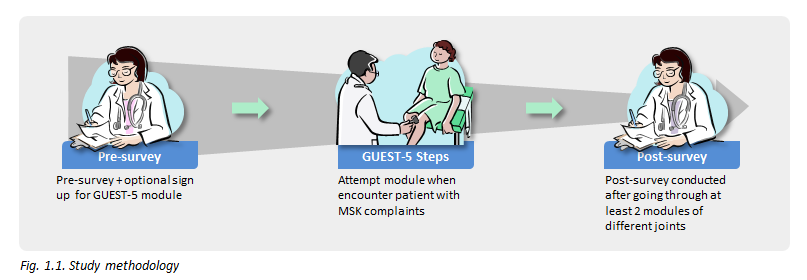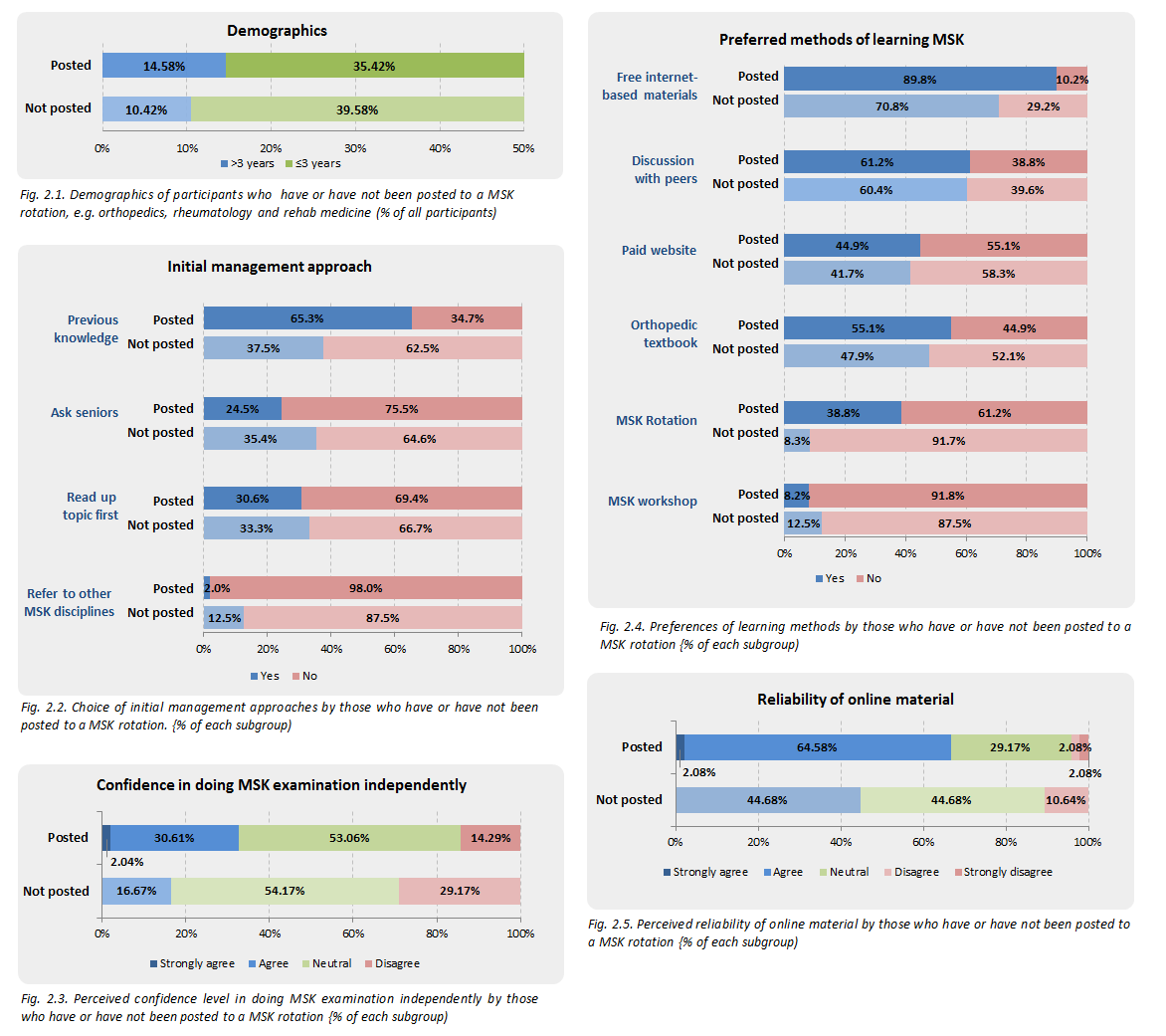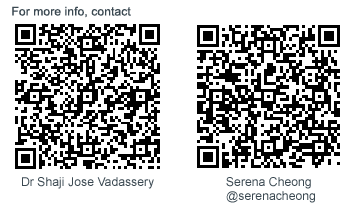
| Theme: 4II Learning / eLearning 1 | |||
 |
||||||
| GUided E-Self sTudy for learning musculo skeletal examination (GUEST-5): a pre intervention analysis |
 |
|||||
|
||||||
Background
Previous studies1 demonstrated that trainees have poor confidence in MSK skills and additional teaching hours does not improve MSK clinical clinical skills. Though the use of online multimedia materials for learning is readily accepted by trainees, there is limited data on skill-based topics such as MSK examination2. Learners are also concerned about how to find reliable sources of learning content3.
Aim
Our study seeks to
- understand current educational practices and confidence of musculo-skeletal examination among residents.
- determine acceptance of and improvement in confidence level in MSK examination after the novel methodology of GUided E-Self sTudy.
Method
Interested participants take a pretest survey to evaluate current learning methods and choice of learning methods. Participants then access 5 steps of pre-verified online materials on examination of 6 major joints


These are the initial analysis of the pre-test reponses, on current learning methods and confidence level, as well as learning preferences of this young generation.

- General
- Among 98 junior doctor participants, about 50% have done a MSK-related posting. (Refer to fig. 2.1)
- Overall, only 22% were confident in doing MSK examination; 55% disagreed that confidence in MSK examination is as good as other system examination.
- Most learners (30%) chose free internet sites for self-learning (p=.022) mostly ‘YouTube’ (86%), while 22% would turn to peers. Most of them were confident in the accuracy and reliability of online materials, but the results were not statistically significant (p=.699)
-
Initial management approach
Most trainees will manage the case based on previous knowledge. Additionally, those done posting are more likely to prefer to manage the case based on previous knowledge than those not done posting (p=.006). (Refer to fig. 2.2) -
Confidence in doing MSK examination
Among those who have done the MSK posting, more than 70% of them have confidence to do MSK examinations(p=.009). Moreover, those done posting seem to have more confidence to do MSK examinations than those not done posting (p=.024).
The results suggest that there is a statistically significant difference between the underlying distributions of the confidence scores of posting and the confidence scores of non-posting (z = -2.251, p = 0.024). (Refer to fig. 2.3) -
Preferred learning methods
Most trainees choose to browse free websites (non-fee based) as one of their main learning methods to do MSK examinations. In general, those who have done posting in MSK are more likely choose self-reading as one of their learning methods than those not done posting (p =.022). (Refer to fig. 2.4) - Perceived reliability of online material
Those done posting seem to have more confidence in the accuracy and reliability of online materials than those not done posting (p=.023). There is no statistically significant difference of having confidence in the accuracy and reliability of online materials between freshies and experienced (p=.699). (Refer to fig. 2.5)
- Internet based learning is preferred among ‘Gen-Y’ doctors. However without proper guidance, this can be dangerous.
- We propose a novel methodology of GUided E-Self sTudy for learning MSK examination, safely and effectively.
- It is possible to prepare module using exisiting multimedia content built by others, especially when the content is marked with #FOAMed (free open access medical education) or creative commons licenses.
- O'Dunn-Orto A, et al. Teaching musculoskeletal clinical skills to medical trainees and physicians: a Best Evidence in Medical Education systematic review of strategies and their effectiveness: BEME Guide No. 18. Med Teach. 2012;34(2):93-102. doi: 10.3109/0142159X.2011.613961. Review. PubMed PMID: 22288986.
- Smith J, et al. Musculoskeletal education in physical medicine and rehabilitation residency programs. Am J Phys Med Rehabil. 2004 Oct;83(10):785-90. PubMed PMID: 15385789.
- Sean Wallace, et al. Medical education and training - Research:‘It's on my iPhone’: attitudes to the use of mobile computing devices in medical education, a mixed-methods study. BMJ Open 2012;2:4 e001099 doi:10.1136/bmjopen-2012-001099http://bmjopen.bmj.com/content/2/4/e001099.full
This project is supported by the NHG-HOMER (Health Oucomes & Medical Education Reseach) grant. We also thank:
- A/Prof Low Yin Peng, Dr William Chan, Loo Wei Hann, Theresa Lim and Sun Bing for their assistance and support in the project.
- Prof Nabil Ebraheim and Dr Andy Thompson for their efforts in creating easily accessible medical educational videos.


 Send Email
Send Email